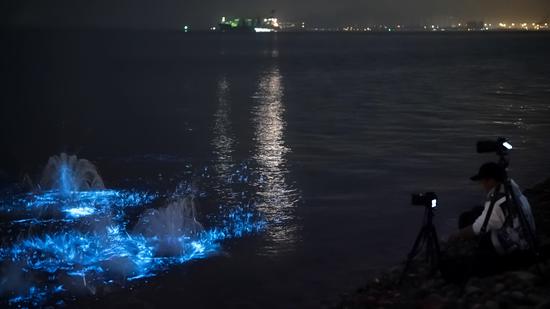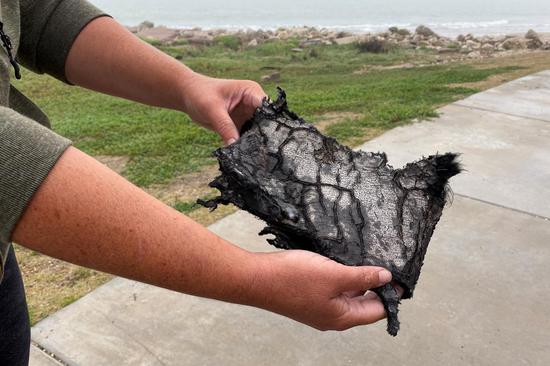
Citizens release fry voluntarily into the Yangtze River in Nanjing, capital of east China's Jiangsu Province, Nov. 15, 2019. (Nanjing Yangtze Finless Porpoise Conservation Association/Handout via Xinhua)
Protecting endangered species
As the fishing ban has sounded the horn, the regions along the river have also launched a campaign to save rare and endangered species, including the Chinese sturgeon and the finless porpoise.
Zhang Xianmin, 52, who fished in the river for over three decades, became part of a finless porpoise protection team in Anqing City, Anhui, after moving ashore in 2019.
"I patrol the Yangtze River with other members every day to observe the finless porpoise, and see if there are illegal activities such as fishing and sand mining that threaten the living of the creature," said Zhang.
The Yangtze finless porpoise is the only freshwater subspecies of the finless porpoise family. The species, only found in the middle and lower main streams of the river, has lived here for 25 million years.
However, according to a research study in 2017, the river mammal is teetering on the brink of extinction. Its population is only around 1,000 in the main waterway of the Yangtze.
In 2017, Hu Shibin, 57, established the patrol team with six ex-fishermen. "The team members have so far increased to 21, and the daily patrol covers 180 km of the waterway of the Anqing section of the Yangtze River," said Hu.
Besides Anhui, other provinces along the river, including Jiangsu, Hubei, Hunan, and Jiangxi, have all established finless porpoise protection teams.
In October, the Nanjing monitoring station for the Yangtze finless porpoise officially opened. It is the first scientific research and protection monitoring station in Jiangsu, focusing on protecting the species.
Jiangxi also issued a guideline to enhance the protection of the finless porpoise's habitats. Emergency rescue and patrol mechanisms will improve to reduce unnatural deaths of the animal.
Thanks to the joint efforts, the creature in the Yangtze has seen a significant increase. "The number of the species in the Nanjing section has jumped to 50 from less than 30," said Yang Guang, head of the Nanjing finless porpoise conservation association.


















































